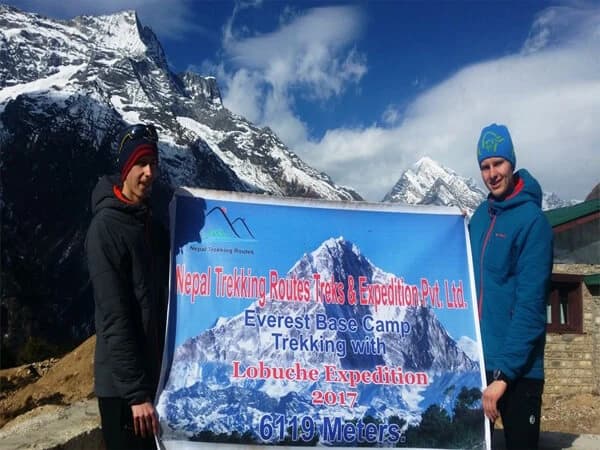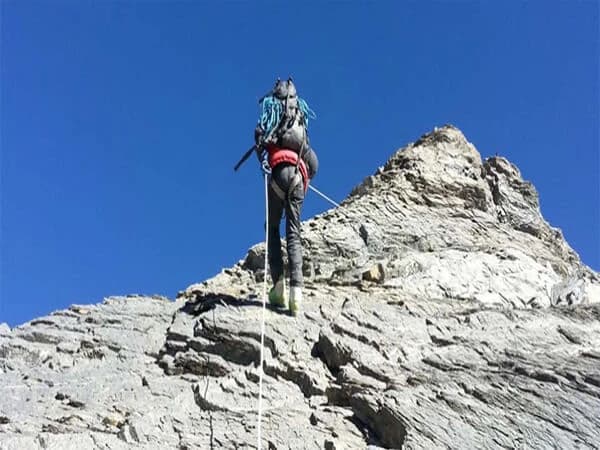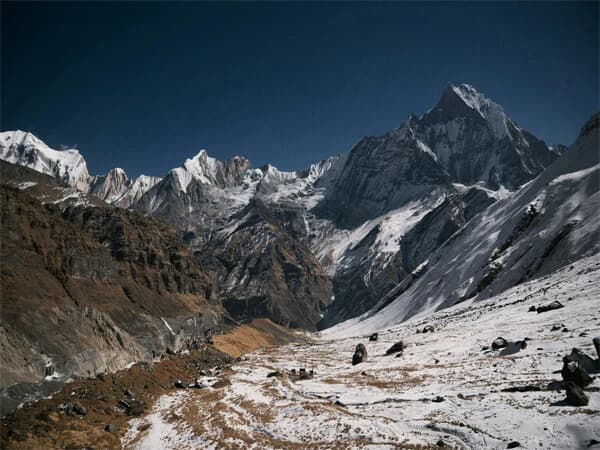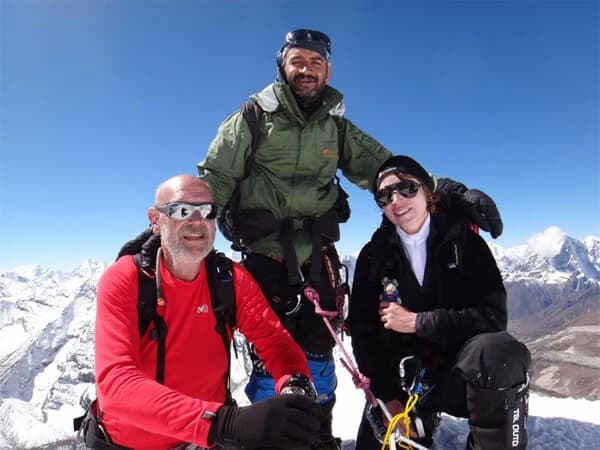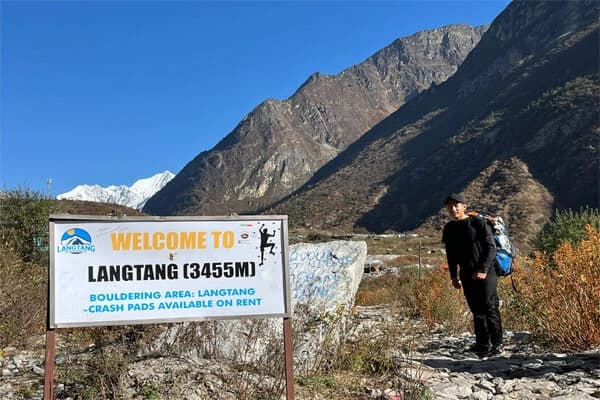The best seasons for peak climbing in Nepal are the spring (March-May) and autumn (September-November). Due to stable weather condition and mild temperature, these seasons have high summit success rates. Let’s take a quick look into the best peak climbing time in Nepal one by one.
Nepal Himalayas extend some 500 miles from the Kali River in the west to the Tista River in the east. There are thousands of mountain peaks from small to highest in the world. There are 1,310 trekking peaks of which are 866 named peaks. Some 326 peaks are open for climbing and mountaineering for both domestic and foreign climbers.
The Nepal Mountaineering Association (NMA) has opened 27 peaks as climbing peaks or trekking peaks in Nepal. To climb any of the NMA Peaks, you need to take Peak climbing permits issued by the Department of Tourism (DOT). Thus, peak climbing in Nepal has attracted thousands of daredevils to get a lifelong experience of peak expeditions. As of this season, mountaineers and climbers can choose a total of 414 mountains; however, 75 of them remain unclimbed.
It is not always easy to climb snowcapped peaks above 5,800m from the sea level. You need technical skills, knowledge to use climbing gears, good lot of physical fitness, mental readiness, and of course, a professional team with a Sherpa Guide perhaps to make your dream come true! Moreover, booking right season is another factor that makes your peak climbing in Nepal. If you fail to choose the right season that has stable weather and temperature, you might not accomplish your mission.
Nepal Best Destination for Peak Climbing
The summer (June-August) and the winter (September-November) are less favorable seasons for Nepal peak climbing and mountaineering. The summer months are very hot even in the Himalayas due to the effects of global warming and climate change. Excessive CO2 emissions are the consequences of generating electricity, and consumption of fossil fuels (coal, oil, and natural gases.)
Nowadays, massive avalanches like that of Tukuche Peak/Manapathi (6,920m) near Kobang Village of theUpper Mustang Region are common due to increasing temperature of the earth. Thank God, no climbers or trekkers were around the peak that is combined with Annapurna Region Trek and Dhaulagiri Region treks!
The summer and the winter are off-seasons for peak climbing and trekking in Nepal. So, you find peaceful trekking trails, discounts on domestic flight tickets, food, and accommodation without worrying about the previous bookings. We recommend you to carry rain gears for the summer peak climbing Nepal.
Similarly, the winter months are not also much supportive for peak climbing in Nepal. The frozen temperature might turn hostile to reach summits by crossing crevasses. However, the winter expeditions are made even to the 8,000ers by several climbers.
Peak Climbing in Nepal become popular Adventure tour in Nepal
The latest example of such feat is achieved by a team of 10 Nepali climbers including Nirmal Purja belonging to the Project Possible. The team has become the first to reach the summit of the Karakoram’s Savage Mountain, Mt. K2 (8,611m/28,251ft) in the winter. The 2021 Winter K2 Expedition was made at 17:00 hours local time on 16 January.
Whatever the weather below 5,800m, the summits of trekking peaks reward you with the blue sky during winter adventure in the Himalayas. Mostly, Island Peak Climbing in the Everest and Yala Peak Climbing in the Langtang are made in December.
Peak climbing in Nepal Season
The spring season in Nepal extends between March and May. It is famous for fine days with clear skies that serve the best mountain vistas while trekking in Nepal or Peak climbing the trekking peaks. Moreover, the entire forests below the climbing in Nepal are beautified by colorful flowers, especially, rhododendrons.
In the spring, there is less chance for rain and clouds in comparison to the monsoon. The warm temperature guarantees less snow deposits on the trekking routes. Climbers can find the right and reliable trails to mountain summits. The 8,000ers such as Everest, Kanchenjunga, Lhotse, Makalu, Manaslu, Dhaulagiri, Annapurna, etc. and trekking peaks like Island Peak, Mera Peak, Pisang Peak, etc. are mostly climbed in the summer. Although the wind speed might create some problems, the spring is the best season for peak climbing in Nepal.
Peak Climbing in Autumn Season
Generally, the autumn season in Nepal lasts from late September to early December. It is the second best peak climbing adventure time in Nepal. Major highlights of the autumn Nepal peak expeditions are warm temperature in the lower altitude and mild temperature in the high Himalayan Region.
The Mother Nature remains calm and supportive after the disastrous and vulnerable monsoon. So, clear views of the snowcapped mountains, washed green hills, and lush valleys are the rewards for climbers. Including other peak climbs, the autumn is the best time for Manaslu expedition.
The records have shown high summit success rates of 8,000ers and the Lesser Himalayas in the autumn. The favorable weather, more comfortable climbing routes, plus well defined base camps and high camps ease trekking peak expeditions. There are no more chances for snow slides and avalanches as the temperature in the autumn remains stable.
Since this is the festive occasions in Nepal, you can observe the festivals such as Dashain, Tihar, and Mani Rimdu during the trip. Similarly, it is the best season for fruit production in Nepal, so you can taste organic fruits as well.
Region-wise Climbing Peaks in Nepal
Although extended some 500 miles from the east to the west, peak climbing in Nepal are found mainly in the Everest Region, Langtang Region, and Annapurna Region. These peaks are higher than 5,500m and below 6,500m from the sea level.
The highest trekking peak in Nepal is Mera Peak (6,476m). It is appreciated by Sir Edmund Hillary as well. According to Hillary, it is the best vantage point of the Everest Region that rewards you with the world’s best Himalayan Views.
To list out the climbing peaks in Nepal according to the trekking regions,
Everest Region Trekking Peaks
Everest Region lies in the easternmost part of Nepal. It has several snowcapped peaks including the world’s highest, Mount Everest (8,848m). Besides, Mt. Lhotse and Mt. Cho Oyu, it has the following trekking peaks:
- Island Peak (6,161m)
- Mera Peak (6,476m)
- Kwangde Peak (6,011m)
- Lobuje East Peak (6,119m)
- Pokhalde Peak (5,806m)
- Ama Dablam (6,812m)
Langtang Region Climbing Peaks
Langtang Region is the closest trekking destinations from the Kathmandu Valley. You reach to the trailhead within 7-hours’ drive from Thamel. It is famous for Langtang Valley Trek, Gosiankunda Helambu Trek, Tamang Heritage Trek, and many more.
The major trekking peaks of the Langtang Region are:
- Ganja La Chuli/Naya Kanga Peak (5,844m)
- Langtang Ri (6,427m)
- Ramdung Go peak (6,930m)
- Pharchamo Peak (6,187m)
- Larke Peak (6,249m)
- Yala Peak (5,700m)
Climbing Peaks of Annapurna Region
The Annapurna Region is named after Mount Annapurna (8,091m), the world’s tenth highest peak. Annapurna Trek are the most done trekking in Nepal that above 2/3 international tourists do these annually. The Annapurna Massif hosts 13 peaks above 7,000m and 16 others over 6,000m including one 8,000ers.
Situated close to the Tourism Capital of Nepal and the Lake City Pokhara, the Annapurna Region has several long and short trek. This region is suitable for free individual trekking and family trekking as well. Annapurna Sunrise View Trek is perhaps the best sunrise view trek in the world.
The major climbing peaks of the Annapurna Region are the following:
- Pisang Peak (6,092m)
- Singu Chuli/Fluted Peak (6,501m)
- Chulu West Peak (6,419m)
- Hiunchuli Peak (6,441m)
- Tharpu Chuli/Tent Peak (5,663m)
- Mardi Himal Peak (5,597m)
Conclusion: Best Season for Peak Climbing in Nepal
Amongst hundreds of Peak climbing in Nepal, you can choose some 326 mountains for expeditions abiding by the Nepal government rules and regulations. The NMA has listed 27 peaks that climbers have to take special permits for climbing them. The climbing permit fees are different for different peaks in different seasons.
Although possible throughout the year, the best peak climbing time in Nepal is either the spring (March-May) or the autumn (late September-early December). Besides peak climbing, expeditions to 8,000ers are also done in these seasons as the weather and temperature remains favorable. Book any of the Peak climbing trip in Nepal with a local tour operator in Kathmandu or Pokhara.


